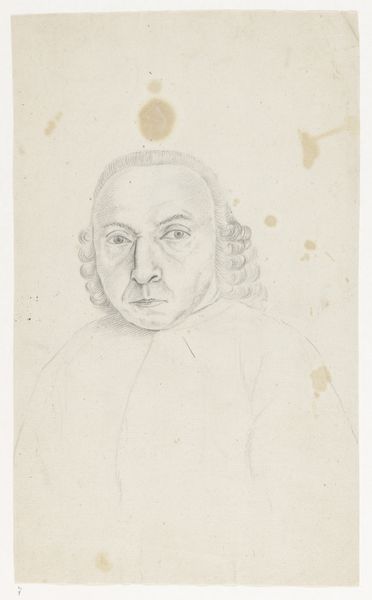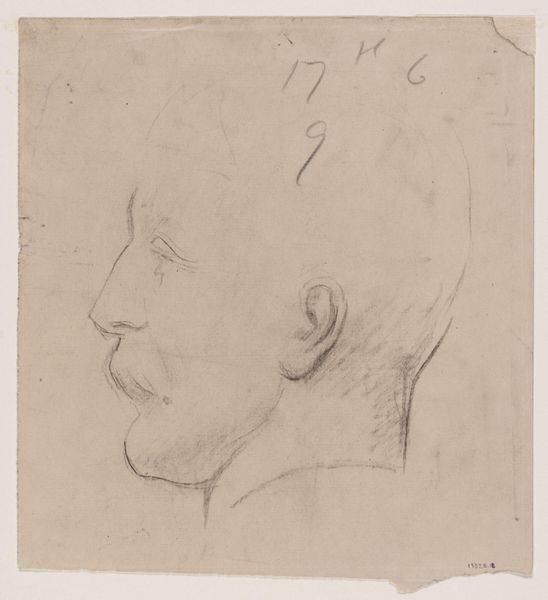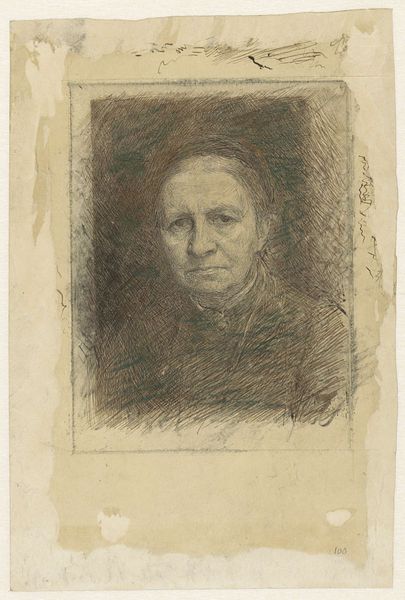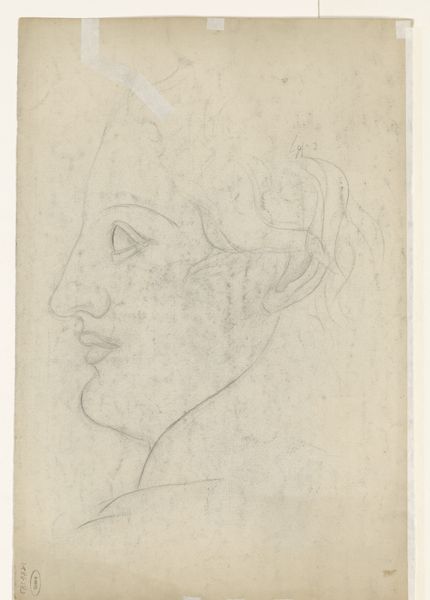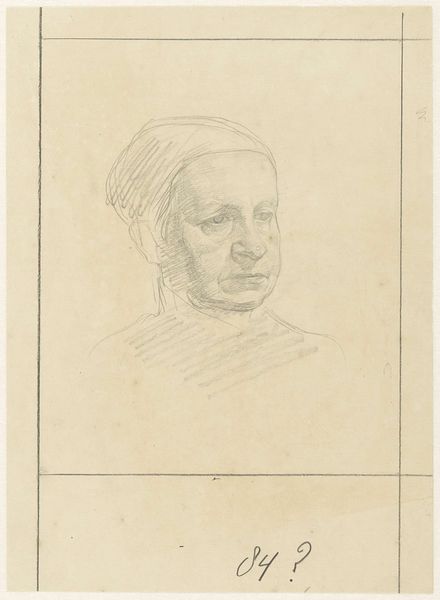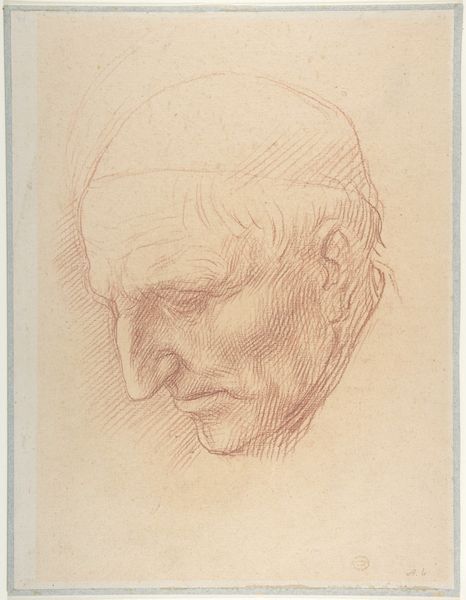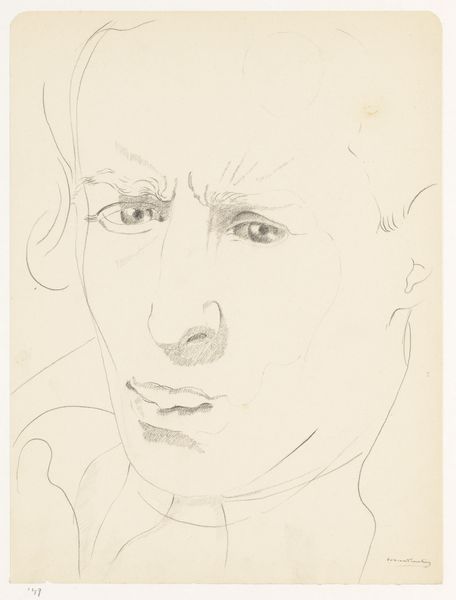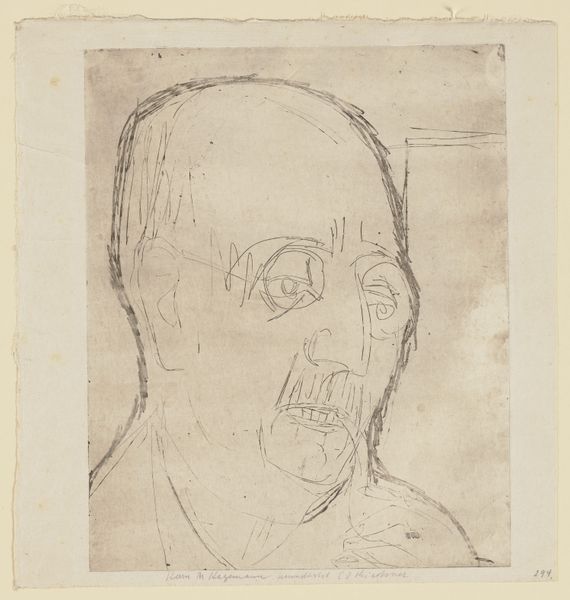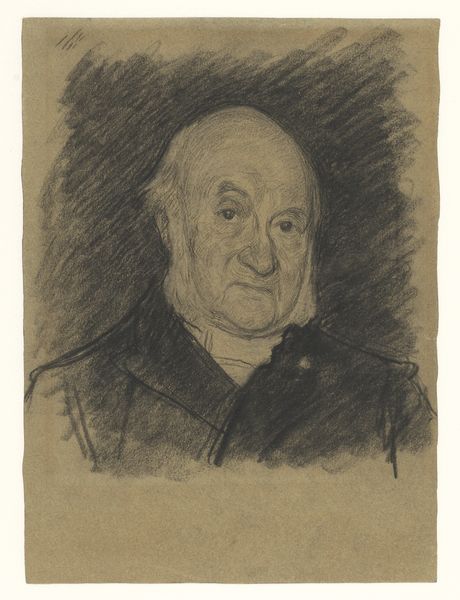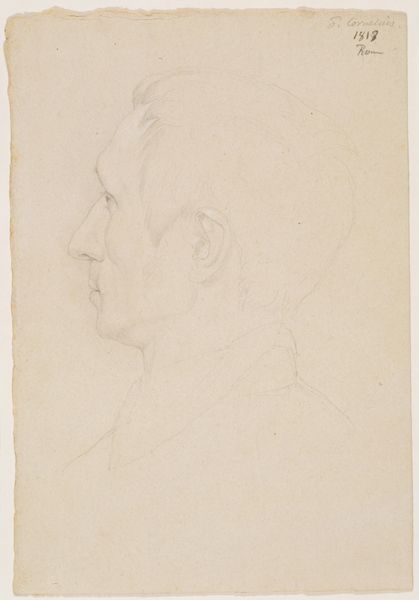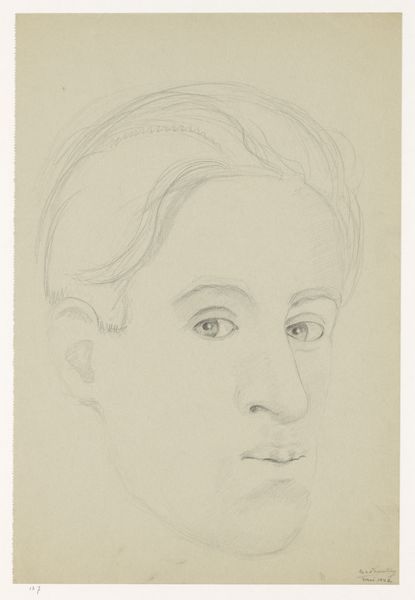
drawing, pencil
#
portrait
#
pencil drawn
#
drawing
#
self-portrait
#
neoclassicism
#
caricature
#
pencil drawing
#
pencil
#
15_18th-century
#
portrait drawing
Dimensions: height 231 mm, width 189 mm
Copyright: Rijks Museum: Open Domain
Editor: Here we have Jan Brandes' "Studie zelfportret," potentially from 1786. It’s a pencil drawing, quite faint, giving it a ghostly, almost ephemeral quality. What strikes me is how unidealized it is, a really direct, unfiltered look. How do you interpret this work? Curator: It's a fascinating piece, particularly when viewed through the lens of self-representation in the late 18th century. While the style hints at neoclassicism, with its emphasis on line and form, its "unidealized" nature as you put it, piques my interest. Consider the social pressures on artists during this period – were self-portraits a space for Brandes to subvert those expectations, to offer a glimpse into a more authentic, perhaps vulnerable, self? What statement might he be making by resisting the era's focus on idealized beauty and social standing? Editor: That’s a compelling thought. It does feel like a very honest portrayal, which, as you said, seems almost rebellious for the time. Curator: Precisely. And thinking about it further, the use of pencil itself speaks volumes. Pencil drawings often served as preparatory studies. Was Brandes allowing us access to his process, inviting us behind the curtain of artistic creation? Is he trying to subvert class dynamics or hierarchies, or create new ones, through these representations? Editor: That definitely reframes how I see it. I was focused on the face itself, but the medium really adds another layer. I see how it can be viewed as a broader commentary. Curator: Art offers such an interesting snapshot of not just individual ideas, but the history of gender, social movements, philosophy. So what do you take away from looking at this? Editor: I'll definitely look at portraiture of this time with a more critical eye. Thank you for pointing out the sociopolitical dimension of artmaking.
Comments
No comments
Be the first to comment and join the conversation on the ultimate creative platform.
